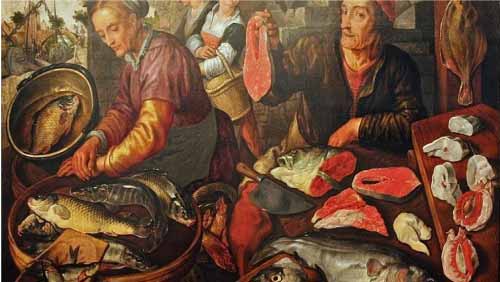The history of gastronomy dates back to prehistoric times, when our ancestors hunted and gathered food to survive. Over time, food became an art and a form of cultural expression. Here are some important milestones in the history of gastronomy:
Antiquity
The cuisine of Antiquity focused heavily on available local ingredients, and meals were often prepared to celebrate special occasions. In ancient Greece, banquets were an important part of culture, and in ancient Rome sophisticated food and gastronomy were valued as a way to display power.
Middle Ages
During the Middle Ages, European cuisine was characterized by the abundance of spices, which were used both to preserve food and to improve its flavor. Banquets were an important part of court life, and preparing extravagant dishes became an art.
Renaissance
During the Renaissance, Italian cuisine became one of the most influential in the world, with dishes such as pasta and pizza. French gastronomy also began to take shape, with the development of haute cuisine and the creation of elaborate and sophisticated dishes.
Modern Era
In the modern era, cuisine has expanded globally and fusion cuisine has emerged, combining elements of different culinary traditions. Fast food has also become ubiquitous, but a countercurrent of people interested in traditional cooking and healthy eating has emerged.
Cuisine in ancient times
In ancient China, food was prepared according to principles of balance and harmony, with a focus on yin and yang energy. In ancient India, cuisine was influenced by Hinduism and vegetarianism. America, pre-Columbian cuisine included a wide variety of ingredients, such as corn, beans, chili and chocolate.
Technological innovations
In the nineteenth century, technological innovations such as the refrigerator and canned food changed the way food was stored and prepared. In the twentieth century, the invention of the microwave and other modern appliances also had a significant impact on the kitchen.
Gastronomic movements
Throughout history, there have been a number of gastronomic movements that have influenced the way people think about food. In the 1960s, Nouvelle cuisine was an approach to French haute cuisine that prioritized the quality of ingredients and simplicity in preparation. In the 1970s, fusion cuisine emerged, combining elements of different culinary traditions. Currently, there is a focus on sustainable cooking and healthy eating.
Cultural influences on gastronomy
Cuisine has been influenced by a variety of cultural factors, including migration and globalization. Latin American cuisine, for example, combines indigenous, European and African ingredients and cooking techniques. Asian cuisine has also had a significant impact on world cuisine, including Japanese sushi and Indian curry.
In short, the history of gastronomy is a vast and complex topic, encompassing the evolution of culture and technology over time, and continues to evolve today.
The evolution of restaurants
The concept of a restaurant as we know it today originated in France in the eighteenth century, when places to eat were established in Paris that offered a variety of dishes and drinks at fixed prices. Over time, restaurants became a staple of food culture around the world.
The influence of science on cooking
In the twentieth century, science began to play an important role in cooking, especially in haute cuisine. The sous-vide technique, for example, uses vacuum and controlled temperature to cook food evenly and retain its nutrients and flavors. Molecular gastronomy also uses scientific principles to create innovative dishes.
The importance of presentation
The presentation of dishes has become increasingly important in modern gastronomy, with chefs using creative techniques to create visually appealing dishes. The presentation can also influence taste perception, as diners often eat with their eyes before tasting the food.
The popularity of cooking shows on television
Television has had a significant impact on modern gastronomy, with popular shows like MasterChef and Top Chef helping popularize haute cuisine and signature cuisine. Cooking shows have also increased public awareness of the importance of food and nutrition.
The influence of wars and migrations on gastronomy
Wars and migrations have had a significant impact on gastronomy throughout history. During World War II, for example, food shortages in Europe led to the invention of dishes such as ratatouille in France and paella in Spain. Migration has also influenced gastronomy, as immigrants often bring with them their own culinary traditions and adapt their recipes to local ingredients and culture.
The importance of local ingredients in gastronomy
Today, there is a growing awareness of the importance of local and sustainable ingredients. Chefs and consumers are looking for fresh, high-quality ingredients that are produced responsibly and environmentally friendly. This trend has led to the popularity of farmers markets and health food stores.
The globalization of gastronomy
Globalization has allowed gastronomy to expand beyond national and cultural borders. Ingredients, techniques and dishes from around the world are being shared and adapted to new cultures and palates. The popularity of ethnic restaurants and fusion cuisine are examples of this trend.
The influence of technology on gastronomy
Technology has had a significant impact on modern gastronomy. Mobile apps and social media are being used by chefs and consumers to share information about ingredients, techniques and dishes. In addition, technology has enabled innovation in the kitchen, with the development of new kitchen utensils and equipment that improve the efficiency and quality of dishes.
In short, the history of gastronomy is a fascinating topic that encompasses the evolution of food and culture over time. Gastronomy has been influenced by a variety of factors, including technology, science, culture and economics, and continues to evolve today.


